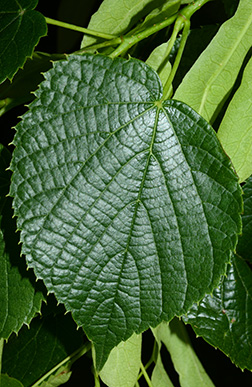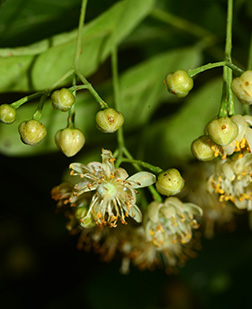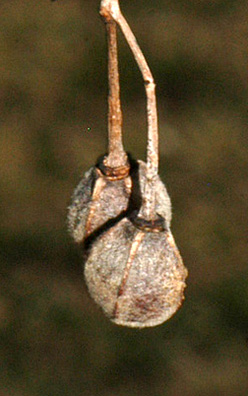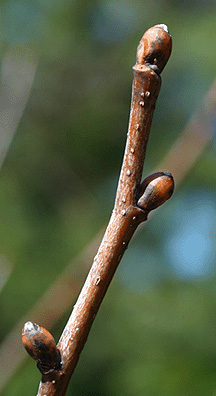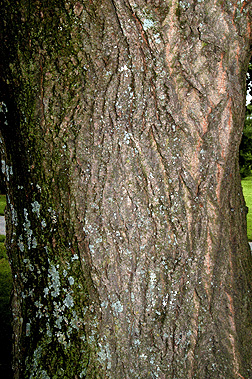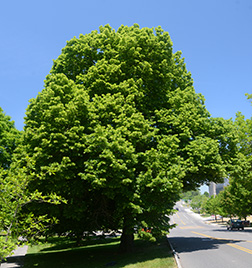 Virginia Tech Dendrology
Virginia Tech Dendrology
European linden Tiliaceae Tilia
xeuropaea L. (pro sp.) [cordata x platyphyllos]
![]()
![]() symbol: TIEU4
symbol: TIEU4
Leaf: Alternate, simple, asymmetrical cordate, 2.5 to 4 inches long, with finely serrate margins, pinnately veined, inequilateral base, green above, paler below with white pubescence in vein axils.
Flower: Species is monoecious; pale yellow, borne below a long, gracefully curving leafy wing in a many (5 to 10) branched cluster, consistently hanging downward below bracts, several inches long, appearing in early to mid-summer.
Fruit: A round, 5 ribbed nutlet (1/5 inch) that is covered with gray-brown hair; occur in a hanging cluster of 2 or 3 with a curving, leafy bract acting as a wing on top of the cluster, ripening in the fall.
Twig: Slender, zigzag, green-brown or red-tinged (particularly in the winter); terminal bud is false (1/6 inch long), buds are plump with one side bulging conspicuously, red to red brown in winter, edible and when eaten they are mucilaginous.
Bark: Gray or brown, long, flat topped ridges with shallow furrows; young stems are brown with shallow splits. Inner bark is quite fibrous.
Form: A medium to large tree that can reach over 100 feet tall with a dense, broadly columnar to round crown. In the U.S. it is typically only seen when open grown where it is often as wide as it is tall. Numerous burls around base with many sprouts.
Looks like: littleleaf linden
- American basswood
- silver linden
Additional Range Information: Tilia xeuropaea is planted in the USDA hardiness zones shown above and is not known to widely escape cultivaton. Download the full-size PDF map.
External Links: USDA Plants Database - USDAFS Forest Products Lab
All material 2025 Virginia Tech Dept. of Forest Resources and Environmental Conservation; Photos and text by: John Seiler, Edward Jensen, Alex Niemiera, and John Peterson; Silvics reprinted from Ag Handbook 654; range map source information
